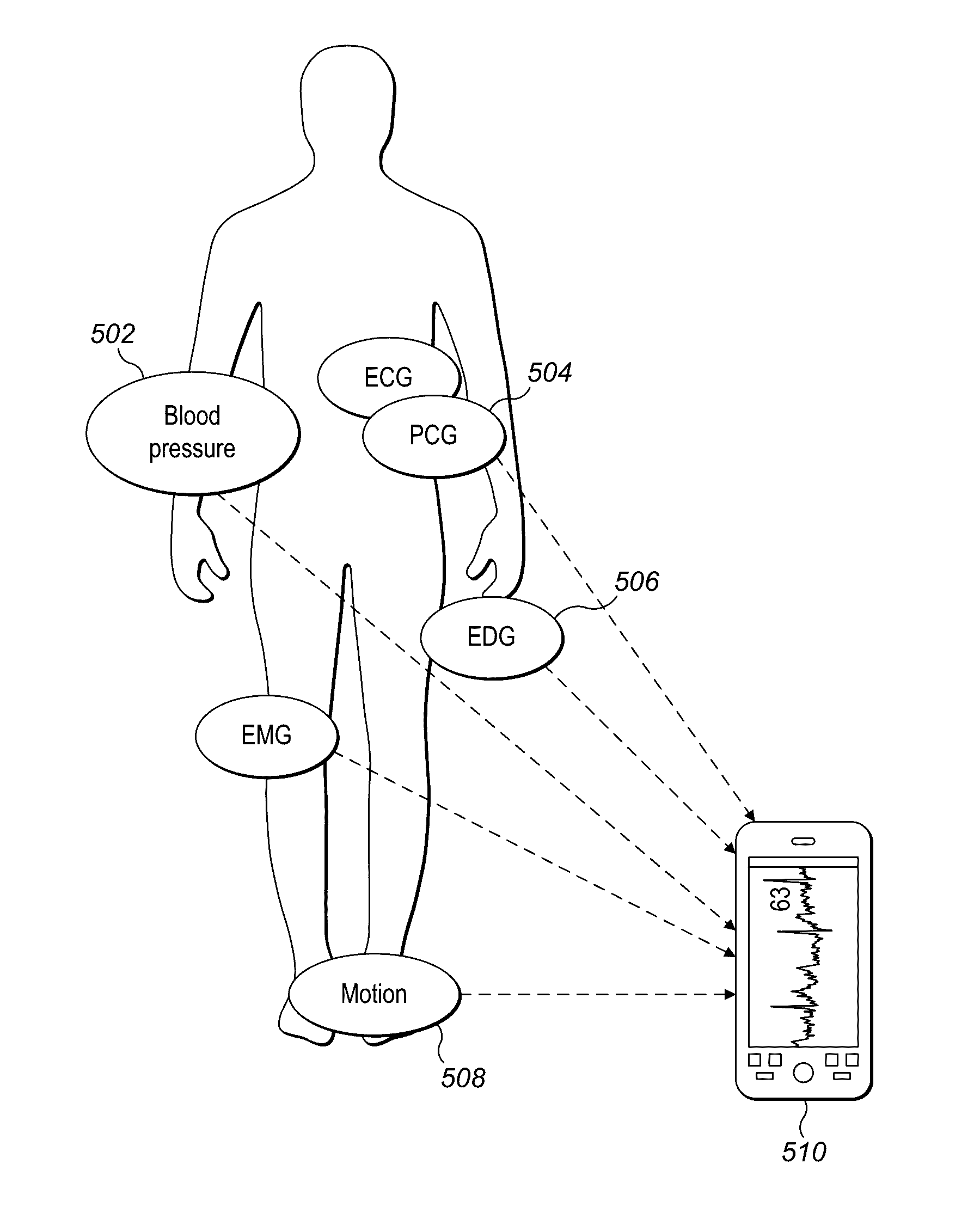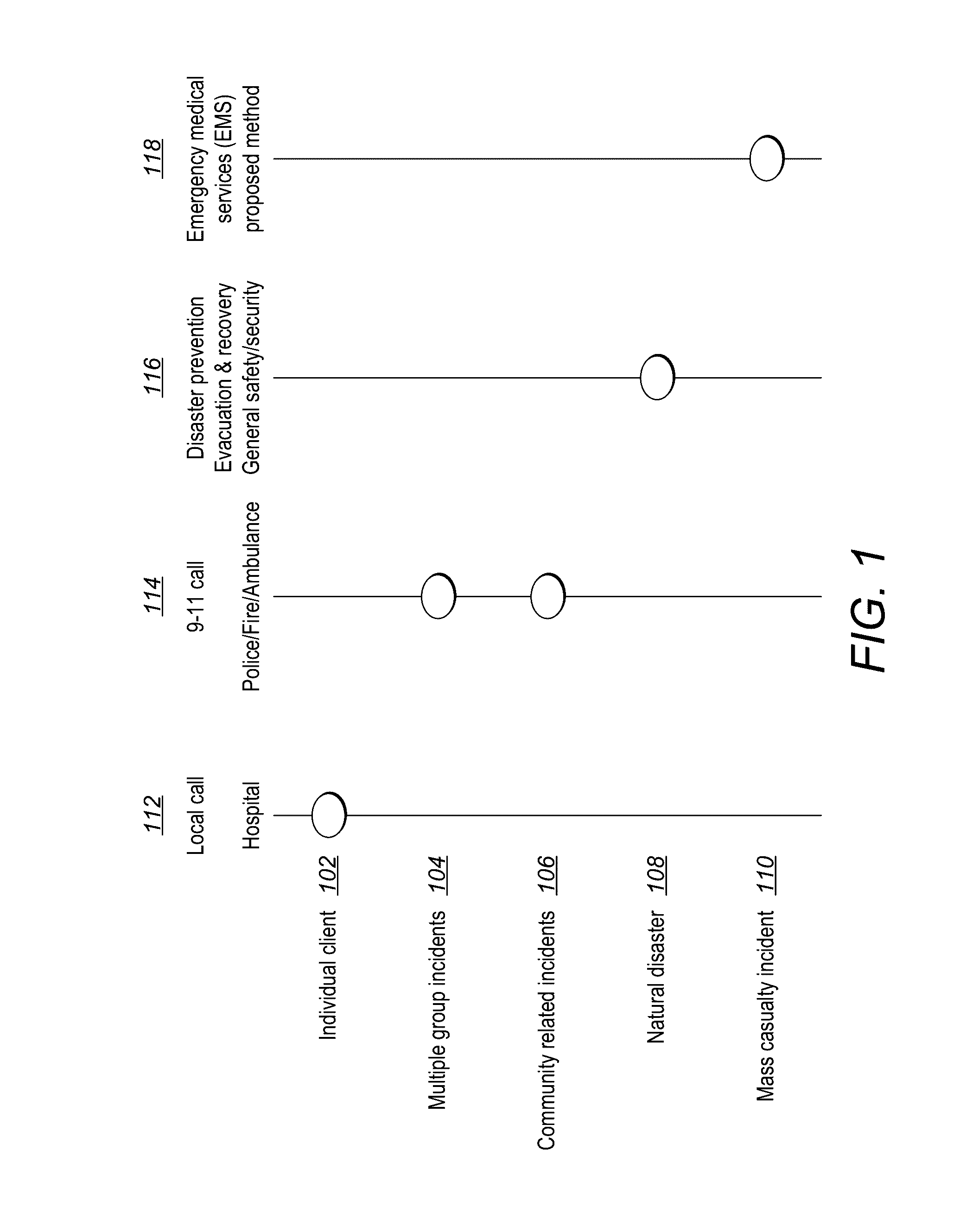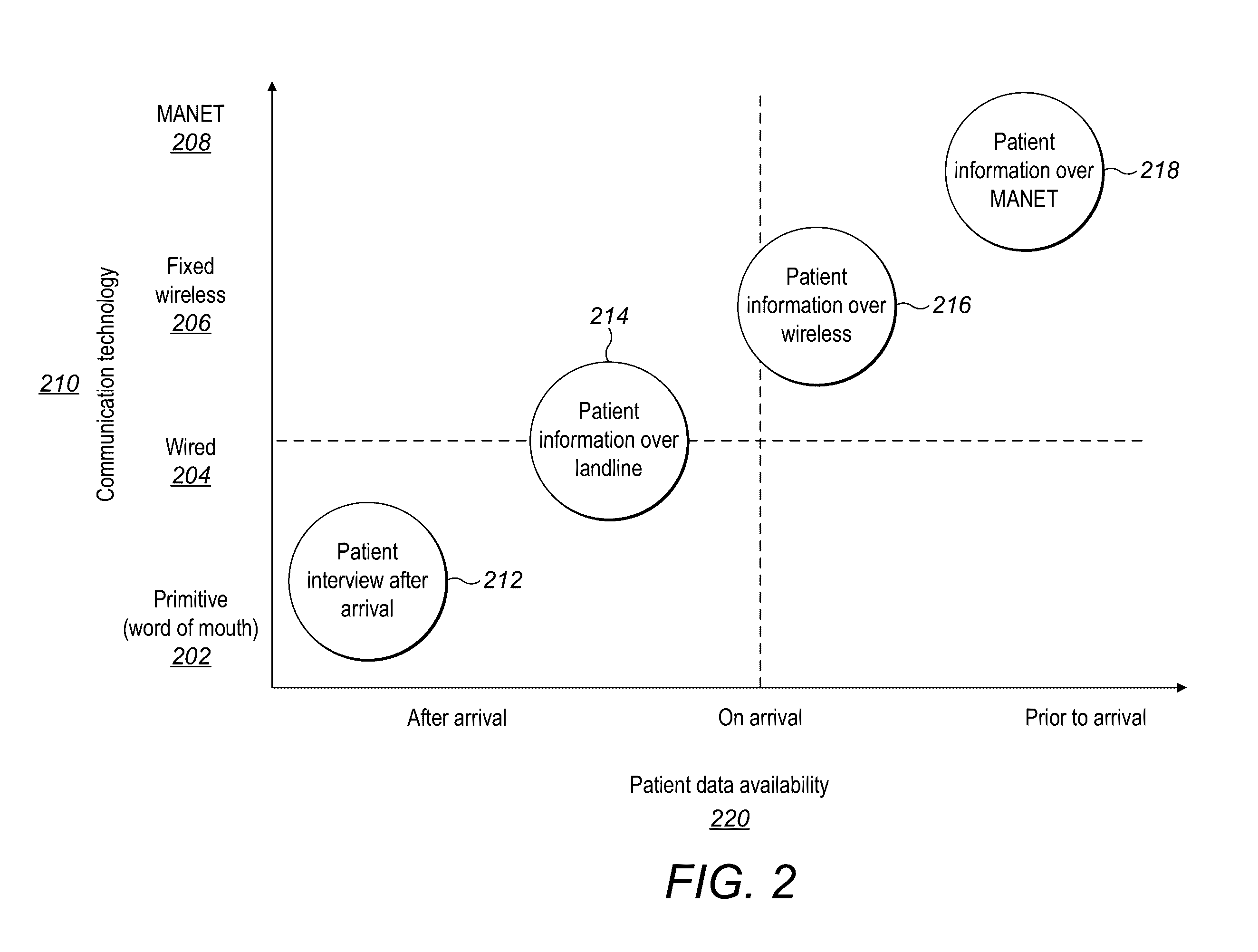Method and apparatus for automated patient severity ranking in mass casualty incidents
a mass casualty and patient technology, applied in the field of automated patient severity ranking in mass casualty incidents, can solve the problems of high communication cost, limited signal reach, and patient condition could degrade in any second, and achieve the effect of reducing communication overhead, reducing communication overhead, and reducing communication costs
- Summary
- Abstract
- Description
- Claims
- Application Information
AI Technical Summary
Benefits of technology
Problems solved by technology
Method used
Image
Examples
Embodiment Construction
[0054]The present disclosure relates to a method and system to accurately relay proactively affected patient's vital body information taken through Body Sensor Network (BSN) and relayed to the smart device near the patient, and through MANET to other devices around. The devices also use the submitted ranking methodology to calculate the most urgent cases. A query mechanism is also submitted that makes it easy for the rescue team to pull the urgency data from any of the smart devices available in MCI.
[0055]Example embodiments, as described below, may be used as a method, process and system to atomically structure the data query management of the rescue team for attending the most urgent cases first.
[0056]It will be appreciated that the various embodiments discussed herein need not necessarily belong to the same group of exemplary embodiments, and may be grouped into various other embodiments not explicitly disclosed herein. In the following description, for the purposes of explanatio...
PUM
 Login to View More
Login to View More Abstract
Description
Claims
Application Information
 Login to View More
Login to View More - R&D
- Intellectual Property
- Life Sciences
- Materials
- Tech Scout
- Unparalleled Data Quality
- Higher Quality Content
- 60% Fewer Hallucinations
Browse by: Latest US Patents, China's latest patents, Technical Efficacy Thesaurus, Application Domain, Technology Topic, Popular Technical Reports.
© 2025 PatSnap. All rights reserved.Legal|Privacy policy|Modern Slavery Act Transparency Statement|Sitemap|About US| Contact US: help@patsnap.com



